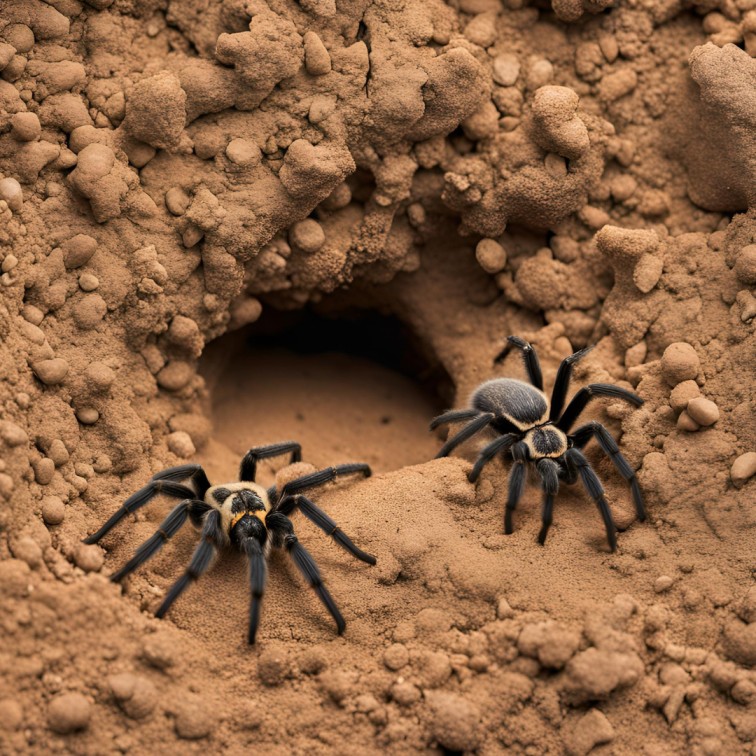Table of Content
Table of Contents
- Introduction
- The World of Tarantulas
- Do Tarantulas Dig Holes?
- Why Tarantulas Dig?
- How Tarantulas Dig?
- The Importance of Burrowing
- Table: Tarantula Burrowing Facts
- Conculsion
- FAQs About Tarantulas Digging Holes
Introduction
Tarantulas, with their hairy bodies and sometimes intimidating appearance, have long fascinated both scientists and spider enthusiasts. But do tarantulas dig holes? This question opens a window into the secretive lives of these remarkable arachnids. In this article, we will explore whether tarantulas are natural diggers, why they might dig, and what this behavior tells us about their survival strategies. Whether you’re a curious student or a budding arachnologist, join us on a journey through the underground world of tarantulas.

The World of Tarantulas
Understanding Tarantulas
Tarantulas are large, ground-dwelling spiders found in various parts of the world, including the United States, South America, and Africa. These spiders belong to the family Theraphosidae and are known for their distinctive, hairy appearance and slow, deliberate movements.
Habitats of Tarantulas
Tarantulas are adaptable creatures that inhabit diverse environments ranging from deserts to rainforests. They are most commonly found in warm, dry climates where they can thrive in the ground or among rocks and vegetation.
Physical Characteristics
Tarantulas have robust bodies covered with fine hairs, known as setae, which serve multiple purposes, including sensory detection and defense. Their powerful legs are equipped with sharp claws that aid in climbing and digging.
Do Tarantulas Dig Holes?
Natural Diggers
Yes, tarantulas do dig holes! Most tarantulas are natural burrowers. They dig holes in the ground to create secure homes, known as burrows, where they spend most of their time. These burrows offer protection from predators and extreme weather, making them crucial for the tarantula’s survival.
Why Tarantulas Dig?
Shelter and Protection
One of the primary reasons tarantulas dig holes is for shelter. By creating a burrow, they can hide from predators such as birds, lizards, and other larger animals. The burrow also provides a stable and safe environment where the tarantula can retreat during the day and come out to hunt at night.
Temperature Regulation
Burrows help tarantulas regulate their body temperature. In hot climates, the underground burrow stays cooler than the surface, protecting the spider from overheating. Conversely, in cooler environments, the burrow retains heat, keeping the tarantula warm.
Moisture Retention
For tarantulas living in dry areas, burrows are essential for maintaining moisture levels. The underground environment is often more humid than the surface, which helps prevent dehydration.
How Tarantulas Dig?
Digging Techniques
Tarantulas use their powerful legs and fangs to dig. They loosen the soil with their fangs and then push it out of the burrow using their legs. This process can take several days or even weeks, depending on the soil type and the size of the burrow.
Types of Burrows
- Vertical Burrows: These burrows go straight down into the ground and are common in dry, sandy areas.
- Horizontal Burrows: These are dug horizontally into the side of a hill or bank and are often found in more stable, compact soil.
Observing Tarantula Burrows
When observing tarantula burrows, you might notice that they are often lined with silk. Tarantulas use their silk to reinforce the burrow walls, making them more stable and durable. This silk also helps to trap moisture, creating a more suitable living environment.
The Importance of Burrowing
Ecological Benefits
Tarantulas play an essential role in their ecosystems by controlling insect populations. Their burrowing behavior contributes to soil aeration, which is beneficial for plant growth. By digging holes, tarantulas help to mix nutrients in the soil, supporting the health of the ecosystem.
Survival Strategies
Burrowing is a crucial survival strategy for tarantulas. It provides them with a hidden sanctuary where they can safely molt, lay eggs, and raise their young. The burrow serves as a base from which the tarantula can hunt for prey and retreat from danger.
Table: Tarantula Burrowing Facts
| Fact | Description |
|---|---|
| Why they dig | For shelter, temperature regulation, and moisture retention |
| How they dig | Using fangs and legs to loosen and move soil |
| Types of burrows | Vertical and horizontal |
| Ecological role | Soil aeration, nutrient mixing, and pest control |
| Burrow lining | Reinforced with silk for stability and moisture retention |
Conclusion
Tarantulas are fascinating creatures with unique behaviors, including their ability to dig holes and create burrows. These burrows serve as essential shelters, protecting tarantulas from predators and extreme environmental conditions. By understanding why and how tarantulas dig holes, we gain insight into their remarkable adaptations and the important role they play in their ecosystems.
Tarantulas’ digging behavior not only ensures their survival but also contributes to the health of the environment by aerating the soil and controlling pest populations. Whether you’re observing tarantulas in the wild or keeping them as pets, appreciating their digging habits offers a glimpse into the complex and hidden world of these incredible arachnids.
FAQs About Tarantulas Digging Holes
1. Do all tarantulas dig holes?
Not all tarantulas dig holes, but most species do. Some prefer to live under rocks or logs.
2. How deep can a tarantula burrow be?
Tarantula burrows can range from a few inches to several feet deep, depending on the species and environment.
3. Do tarantulas dig holes in captivity?
Yes, tarantulas will often dig burrows in captivity if provided with suitable substrate.
4. What do tarantulas use to dig holes?
Tarantulas use their fangs and legs to loosen and remove soil when digging burrows.
5. Are tarantula burrows dangerous to humans?
No, tarantula burrows are not dangerous to humans. Tarantulas are generally shy and prefer to avoid human contact.

